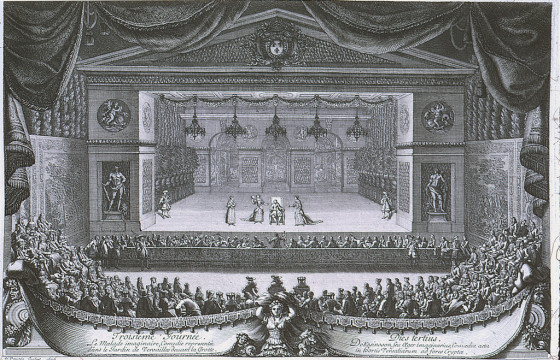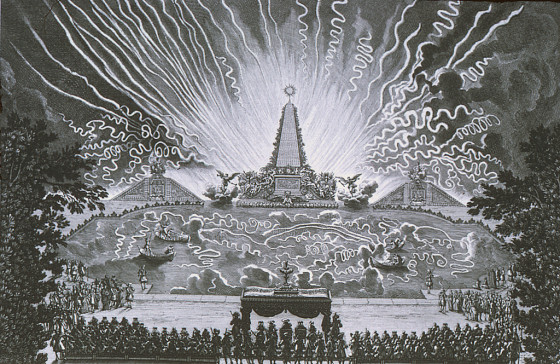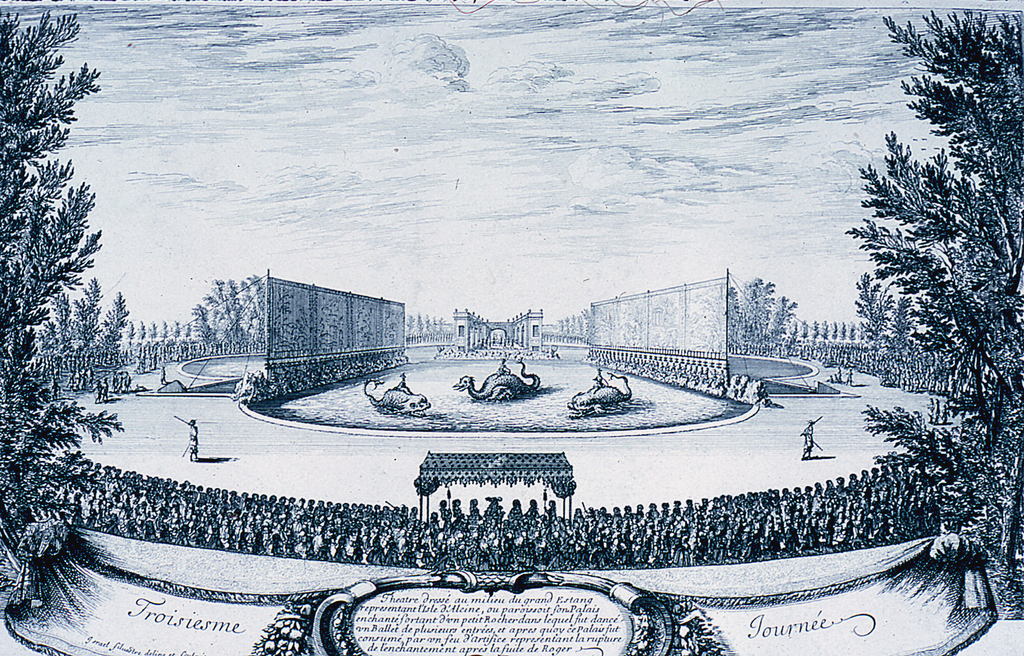In 1664, Versailles was briefly transformed into a mythical and enchanted fairytale land. From May 7th to 13th, the court of Louis XIV arranged a festival of Les Plaisirs de l’Ile Enchantée (Pleasures of an Enchanted Island) in honor of Anne of Austria, the mother of Louis XIV and the queen Maria Theresa, although the festivities were unofficially dedicated to the king’s mistress, Louise de La Vallière.
The festival was a combined effort of the French playwright Molière; the composer and dancer Jean-Baptiste Lully, the poet and librettist Philippe Quinault; the stage designer Carlo Vigarani; the garden designer André Le Nôtre; and the manager of the ballet Duc de Saint-Aignan. The festival was loosely based on a tale from Ludovico Ariosto’s epic Orlando Furioso (1516), and tells a tale of the sorceress Alcine (Alcina) who holds Roger (Ruggiero) and his knight captive in her enchanted palace. The festival unfurled as a large-scale interactive theatre and featured parades, equestrian games, ballets, concerts, fireworks, and elaborate feasts. Throughout the play, Louis XIV played the role of Roger, although at times an actor replaced him in ballets.
This particular print shows the third day when Alcine and her servants are carried by whale calves in the canals of Versailles. This would have been an incredible feat of engineering. Louis XIV can be spotted in the center under the canopy, wearing his large plumed hat. In this scene, Alcine was played by the actor and dancer Marquise-Thérèse de Gorla, also known as Mademoiselle Du Parc. In the far background, a ballet is performed..
Also on the third day, Moliere staged his play Le malade imaginaire (The imaginary invalid), in the gardens of Versailles, in front of the grotto. This scene is captured in an engraving below:

Print, Versailles, Gardens, The Pleasures of the Enchanted Isle, 1664; Etching and engraving, Black ink on rolled paper; Cooper Hewitt, Smithsonian Design Museum, Gift of Eleanor and Sarah Hewitt, Inv. no. 1931-86-64.
On the fifth day, the garden of Versailles was lit up with fireworks. In the print below, fireworks are set off from makeshift boats on the canal of Versailles. The king can be spotted once more under the canopy.

Print, Versailles, Gardens, The Pleasures of the Enchanted Isle, 1664; Etching and engraving, Black ink on rolled paper; Cooper Hewitt, Smithsonian Design Museum, Gift of Eleanor and Sarah Hewitt, Inv. no. 1931-86-66
All of these engravings, made by Israël Silvestre and Jean Lepautre, were published as a suite of prints depicting the highlights of the festival, perhaps as souvenirs for attendees. The survival of the grandiose event through the print medium documented the ephemeral event and circulated the economic, artistic, and the technical might of Versailles and of Louis XIV. The festival of the enchanted island was one of the greatest court entertainments of the long eighteenth century. The event brought together fantasy and drama in service of royal propaganda, fusing the authority of the Sun King and the vision of a chivalrous knight.
Cabelle Ahn is a graduate intern in the Department of Drawings, Prints and Graphic Design at the Cooper Hewitt, Smithsonian Design Museum. She received her MA in Art History from the Courtauld Institute of Art and is currently studying eighteenth century French works on paper at the Bard Graduate Center.
